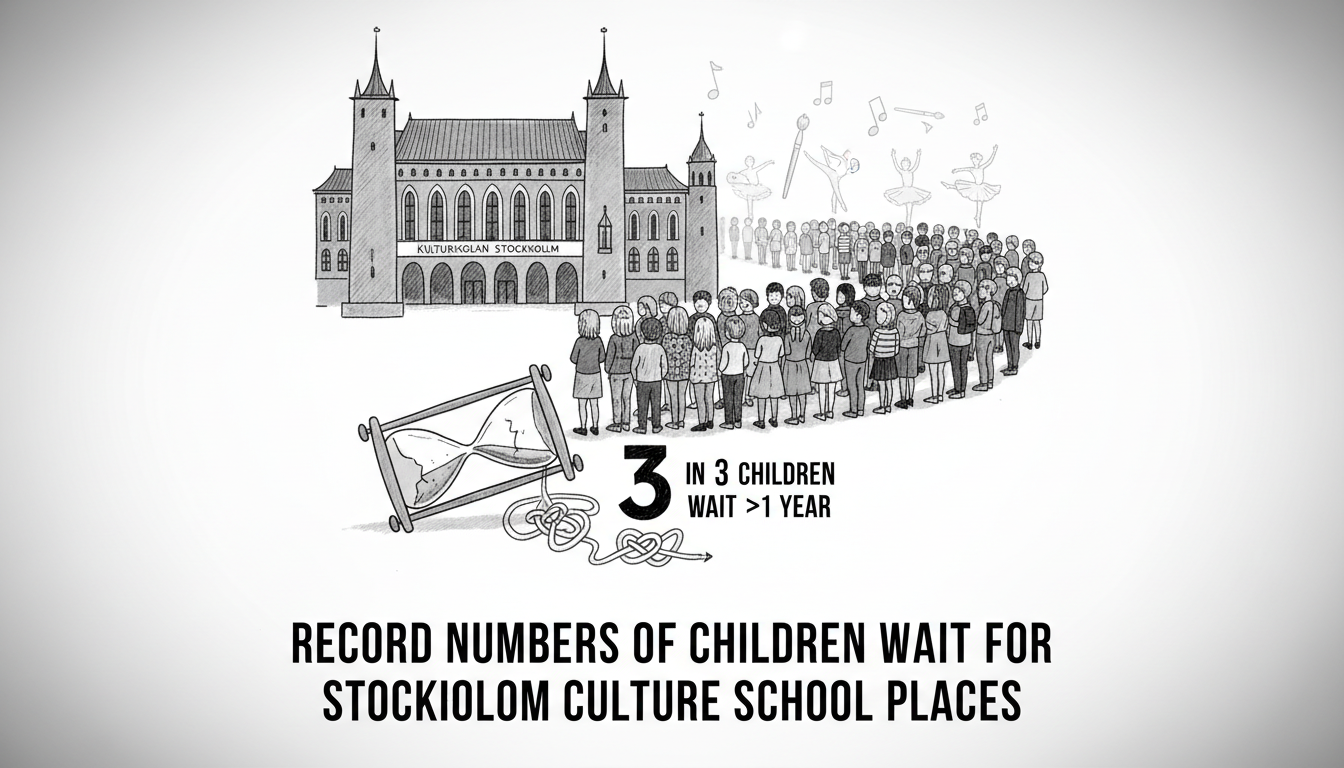A quiet crisis is unfolding in Stockholm's cultural education system. One in three children applying for long-term courses at the city's Kulturskolan now faces waiting lists stretching at least one year. Many wait even longer. The situation has deteriorated markedly since last year, creating frustration for families across the city.
I spoke with parents in Vasastan who shared their disappointment. Their daughter has been waiting fourteen months for a violin spot. They see her enthusiasm waning with each passing season. This story repeats across Stockholm neighborhoods from Södermalm to Östermalm.
The administrative challenges compound the problem. Despite budget constraints, officials purchased a new computer system costing double the previous one. Staff describe it as fundamentally flawed. Piano teacher Welmoed Bosveld compared the situation to healthcare technology failures. She said the system simply does not work and creates unnecessary stress for educators.
This bottleneck affects Stockholm's cultural fabric. The Kulturskolan represents Sweden's commitment to accessible arts education. For decades, it provided music, dance, and art instruction to children regardless of family income. The current queue system threatens this egalitarian ideal.
What does this mean for Stockholm's cultural future? Children missing these formative years may never develop their artistic talents. The city risks losing a generation of musicians, painters, and performers. Cultural institutions from the Royal Opera to local theaters depend on this pipeline of talent.
International families relocating to Stockholm face particular challenges. Many choose Sweden specifically for its renowned arts education system. They arrive expecting accessible cultural programs, only to encounter these extensive waiting lists. This affects Stockholm's attractiveness as a destination for global talent.
The timing seems particularly ironic. Stockholm celebrates its cultural vibrancy with events like the annual Culture Night. Yet the very institution nurturing future artists struggles to serve children. The city invests in cultural festivals while the educational foundation weakens.
Parents wonder about solutions. Some suggest expanding programs to suburban cultural centers. Others propose partnerships with independent music schools. The fundamental question remains whether Stockholm will prioritize cultural education during budget discussions.
The situation reflects broader tensions in Swedish society. Balancing fiscal responsibility with cultural investment challenges many municipalities. Stockholm's approach to this Kulturskolan crisis will signal its cultural priorities for coming years.

